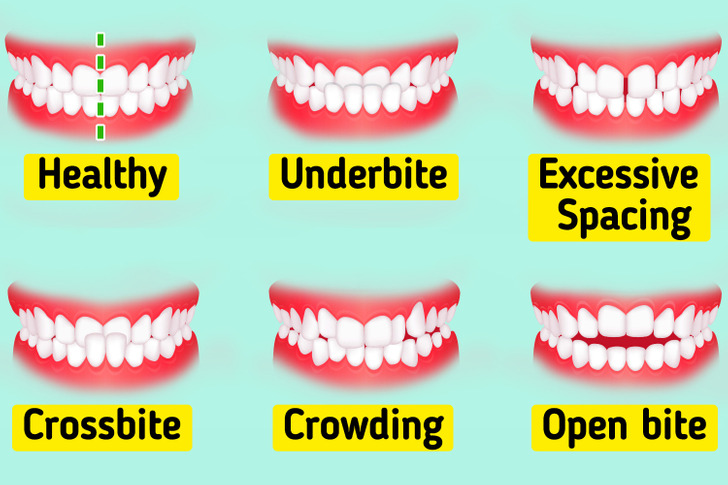What Type of Teeth You Have
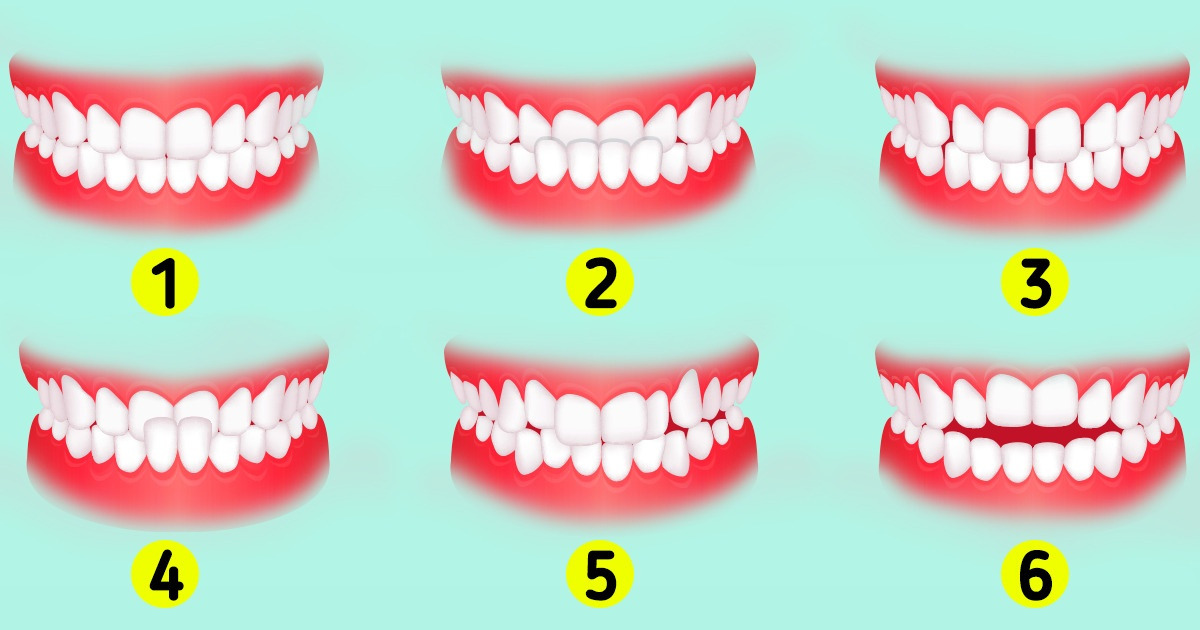
There are 4 types of teeth in an adult person’s mouth. Each of them is located in a particular place and serves a function. With 5-Minute Crafts, you’ll learn about the types of human teeth and their differences.
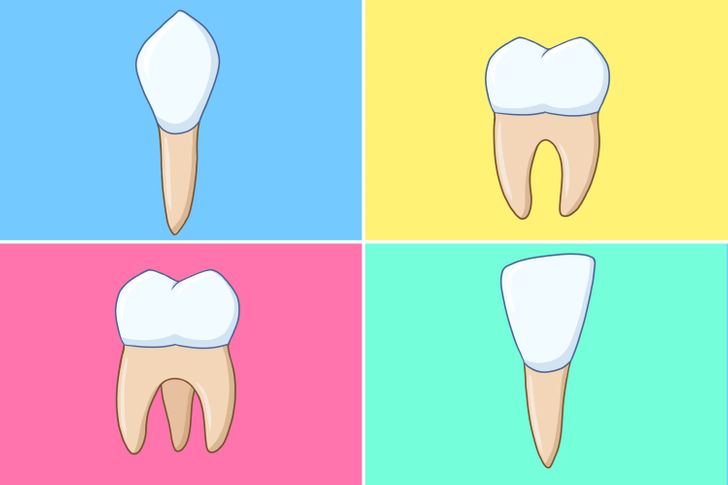
- At the front part of the mouth you will find, sharp, flat teeth with a straight edge called incisors. They have one root and are meant for biting off and gripping food, as well as for its primary chopping.
These are the teeth that are the first to erupt in babies (usually at around 6 months). The change of these teeth to permanent ones occurs around the age of 6-8 years.
Both kids and adults have 8 incisors. They are located in the central part of the jaw: 4 on the upper jaw and 4 on the lower jaw. The middle 4 are called central incisors, while the other 4 next to them are called lateral incisors.
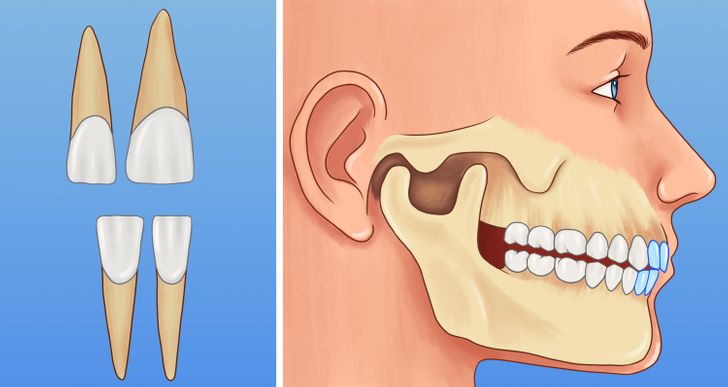
- The teeth next to the lateral incisors are called canines, and they boast a sharp pointed edge. They are the longest teeth in the mouth — their single root can reach up to 1.2 inches. They are meant to hold and tear food.
- Canines appear in babies at about 16-20 months — the upper ones a little earlier than the lower ones. These teeth change to permanent ones around the age of 9-12 years, with the lower ones coming in a little earlier than the upper ones. Both children and adults have 2 canines on each jaw.
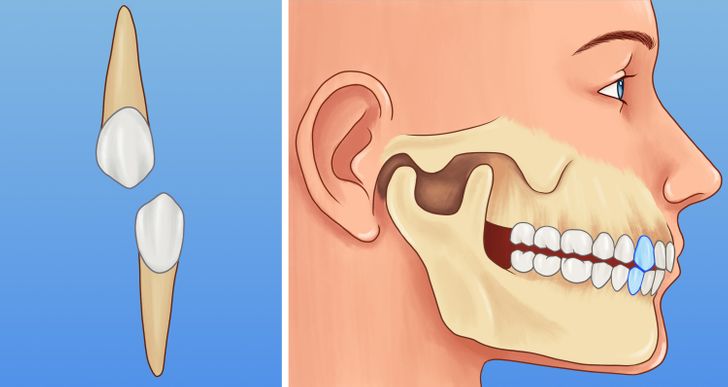
- Next to the canines, toward the back of the mouth, some premolars are also called bicuspids. They have a big surface for chewing and grinding food and several sharp points for piercing and ripping food. Premolars are something between canines and molars. Their primary role is pre-grinding food before it gets to the molars.
- Adults have 4 premolars on each jaw. Those that are located closer to the canines are called first premolars. The other 4 in the back are called second premolars. The first premolars of the upper jaw have 2 roots. The second premolar of the upper jaw and all the premolars of the lower jaw have one root.
- Little kids don’t have premolars; these teeth first appear between the ages of 10 and 12. When they erupt, they replace the primary molars.
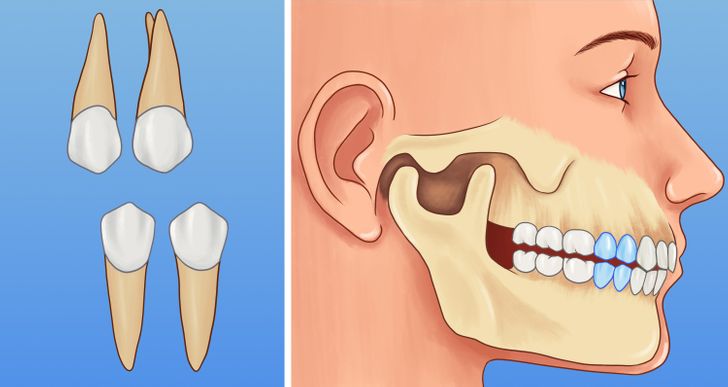
- Molars are the biggest of all the teeth. They have a wide flat surface with large cusps, which allow us to chew food and grind it well before swallowing it. There are 12 molars in an adult human jaw and 8 molars in kids’ jaws. Primary molars appear in kids at 12-28 months and later get replaced with first and second premolars.
- The permanent molars don’t replace any primary teeth and erupt behind them at the back part of the jaw. The first molars erupt at about the age of 6, and the next ones at about 11-13 years old. The third molars, also called wisdom teeth, appear no earlier than 18-20 years old. Sometimes they stay inside the jaw and never break through.
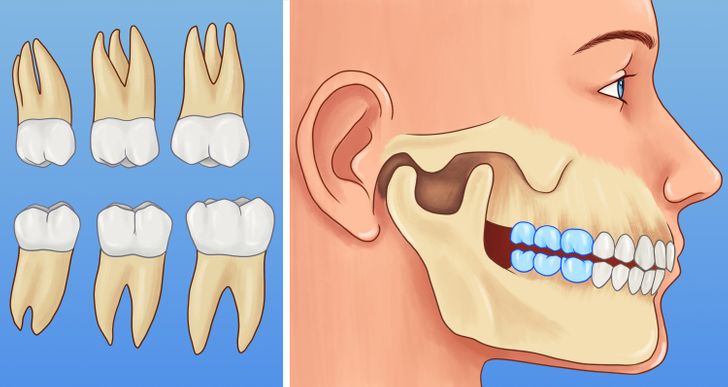
Bonus: common bite problems
Orthodontic problems may result from genetic or environmental conditions, but you don’t need to worry about it. Thanks to the advancement in orthodontics, correcting common bite issues is now possible. Your bite is determined by the way your upper and lower teeth align.
- A healthy bite, ideal bite, or a normal bite is defined as your upper teeth fitting just a bit over the bottom, and your molars’ points fitting in the grooves of the opposite molars.
- An underbite occurs when the lower teeth extend past the front teeth due to abnormal upper and lower jaw growth or missing lower teeth.
- Excessive spacing occurs when the teeth are too far from each other due to missing teeth, oversized jaws, or teeth that are smaller than expected.
- A crossbite occurs when your top and bottom teeth don’t meet each other correctly. As such, one or more of your upper teeth sit on the lower ones on the inside, making it hard to bite or chew.
- Crowding occurs when the teeth are too close due to inadequate space in the jaw or big teeth. It may result in the teeth overlapping, rotating, etc.
- An open bite happens when there is space between the top and bottom teeth when the jaws are closed, so they don’t overlap at the front for some reason, which could be a result of digit sucking, a tongue thrust, or when the jaws simply don’t grow evenly.
Please note: This article was updated in July 2022 to correct source material and factual inaccuracies.
Preview photo credit Depositphotos.com
Share This Article
